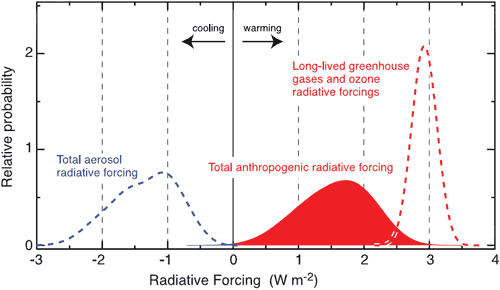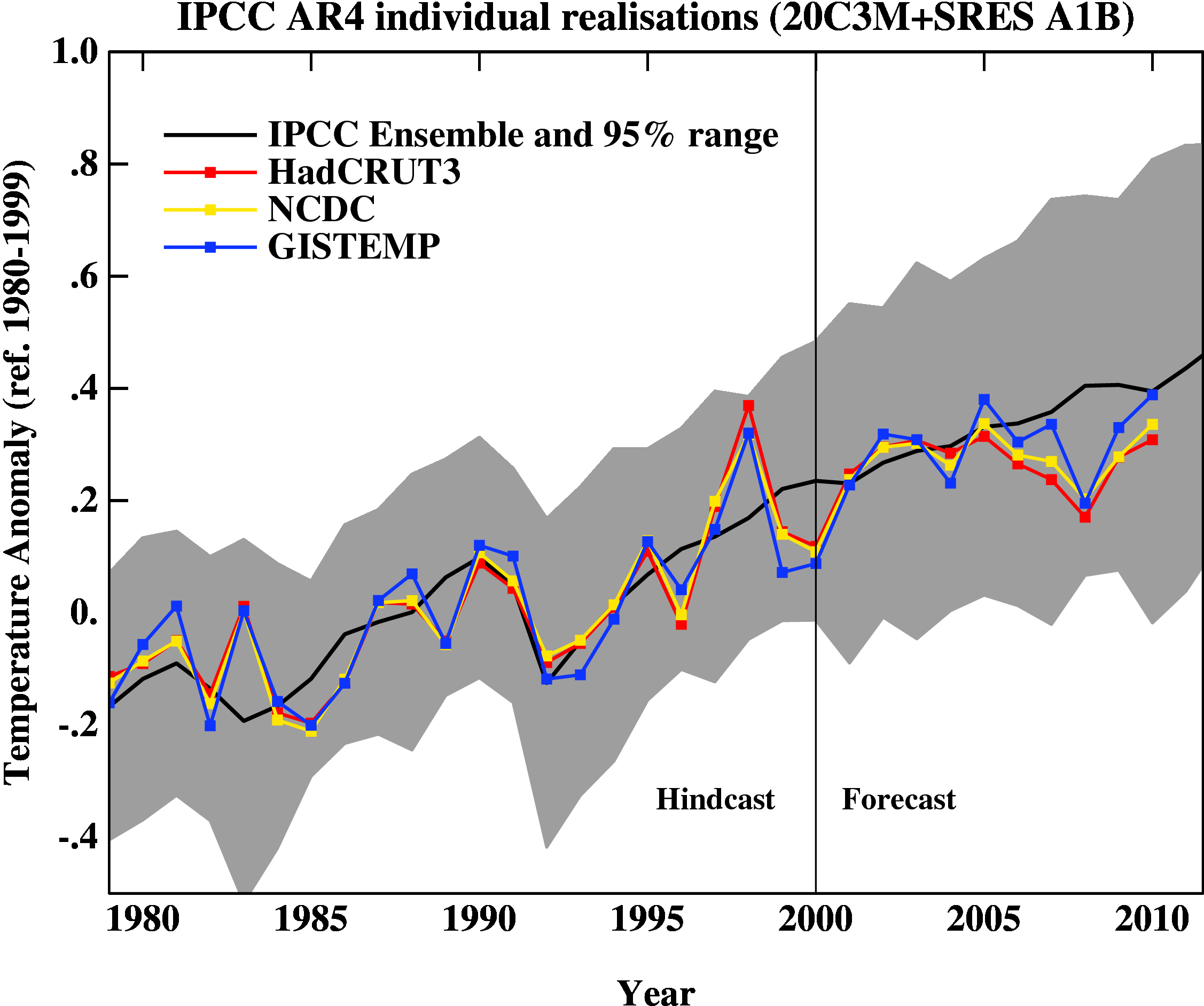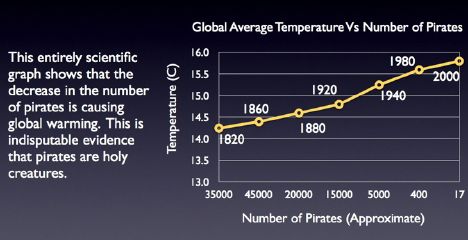Radiative forcing by aerosol used as a wild card: NIPCC vs Lindzen
Posted on 22 February 2011 by Bart Verheggen
 The greatest source of uncertainty in understanding climate change is arguably due to the role of aerosols and clouds. This uncertainty offers fertile ground for contrarians to imply that future global warming will be much less than commonly thought. However, some (e.g. Lindzen) do so by claiming that aerosol forcing is overestimated, while others (e.g. the NIPCC) by claiming that aerosol forcing is underestimated. Even so, they still arrive at the same conclusion…
The greatest source of uncertainty in understanding climate change is arguably due to the role of aerosols and clouds. This uncertainty offers fertile ground for contrarians to imply that future global warming will be much less than commonly thought. However, some (e.g. Lindzen) do so by claiming that aerosol forcing is overestimated, while others (e.g. the NIPCC) by claiming that aerosol forcing is underestimated. Even so, they still arrive at the same conclusion…
Let’s have a look at their respective arguments. Below is a figure showing the radiative forcing from greenhouse gases and from aerosols, as compared to pre-industrial times. The solid red curve gives the net forcing from these two factors. The wide range of possible values is primarily due to the uncertainty in aerosol forcing (blue dotted line).

The greenhouse gas forcing (dashed red curve) is relatively well known, but the aerosol forcing (dashed blue curve) is not. The resulting net anthropogenic forcing (red solid curve) is not well constrained. The height of the curve gives the relative probability of the associated value, i.e. the net climate forcing is probably between 1 and 2 W/m2, but could be anywhere between 0 and 3 W/m2. (From IPCC, 2007, Fig 2.20)
NIPCC’s argument
The NIPCC report (a skeptical document, edited by Craig Idso and Fred Singer, made to resemble the IPCC report) says:
“The IPCC dramatically underestimates the total cooling effect of aerosols.”
They hypothesize that natural emissions of aerosol precursors will increase in a warming climate, causing a negative feedback so as to dampen the warming. Examples of such gaseous aerosol precursors are dimethyl sulfide (DMS) emitted by plankton or iodocompounds created by marine algae. They use these putative negative feedbacks to claim that
“model-derived sensitivity is too large and feedbacks in the climate system reduce it to values that are an order of magnitude smaller.”
Rebuttal
These are intriguing processes (the “CLAW hypothesis” first got me interested in aerosols, when I assisted with DMS measurements on some remote Scottish islands), but their significance on a global scale is ambiguous and highly uncertain. As a review article about the DMS-climate link says:
“Determining the strength and even the direction, positive or negative, of the feedbacks in the CLAW hypothesis has proved one of the most challenging aspects of research into the role of the sulfur cycle on climate modification.”
The NIPCC report exaggerates the uncertainty in climate science, but seems to put a lot of faith in elusive and hardly quantified processes such as natural aerosol feedbacks coming to our rescue.
Lindzen’s argument
On to Lindzen:
“The greenhouse forcing from man made greenhouse gases is already about 86% of what one expects from a doubling of CO2 (…) which implies that we should already have seen much more warming than we have seen thus far (…).”
Lindzen again (E&E 2007):
“How then, can it be claimed that models are replicating the observed warming? Two matters are invoked.”
The “two matters” he refers to are aerosol cooling and thermal inertia from the oceans (a.k.a. “warming in the pipeline”). He then proceeds to argue that both of these factors are much smaller than generally thought, perhaps even zero. E.g. on aerosols, Lindzen writes:
“a recent paper by Ramanathan et al (2007) suggests that the warming effect of aerosols may dominate – implying that the sign of the aerosol effect is in question.”
By neglecting the importance of these two factors, Lindzen argues that the observed warming implies a small climate sensitivity.
Rebuttal
While it is true that aerosols can warm and cool the climate (by absorption and reflection of solar radiation, respectively, besides influencing cloud properties), most evidence suggests that globally, cooling is dominant. Whereas Ramanthan et al (2007) don’t quantify the net aerosol effect (in contrast to Lindzen’s implicit claim), Ramanathan and Carmichael (2008) do. They estimate both the warming ánd cooling effects to be stronger than most other estimates, but the net forcing (-1.4 W/m2) is right in line with (even a little stronger than) the IPCC estimate (see the above figure). Taking into account realistic estimates of aerosol forcing and ocean thermal inertia, the earth has warmed as much as expected, within the admittedly rather large uncertainties. Ironically, it is exactly because aerosol forcing is so uncertain and because the climate hasn’t equilibrated yet that the observed warming since pre-industrial times is only a very weak constraint on climate sensitivity. Lindzen seems very certain of something that most scientists would readily admit is very uncertain.
Conclusion
So we have the peculiar situation that both of these approaches try to claim that climate sensitivity is small, but the NIPCC approach is to claim that aerosol forcing is very large (thus providing a negative feedback to warming), whereas the Lindzen approach is to claim that aerosol forcing is very small (thus necessitating a small sensitivity to explain the observed warming so far). Of course they can’t both be right, and probably neither of them are. Looking back at the figure above, both approaches are based on assuming that aerosol forcing is at the edge of the probability spectrum (as if it were some fudge factor), whereas the most likely value is somewhere in the mid range. Both approaches also ignore the other lines of evidence that point to climate sensitivity likely being in the range of 2 to 4.5 degrees. E.g. a value as small as suggested by the NIPCC (0.3 degrees) is entirely inconsistent with the paleo-climate record of substantial climate changes in the earth’ history. And finally, both approaches implicitly assign high confidence to some of the most uncertain aspects of climate science, even though they routinely mock climate science as if nothing is known at all.
Whereas the existing uncertainty in the science is sometimes put forward as an excuse to continue business as usual, such an approach invariably suffers from viewing this uncertainty going in one direction only: making the problem seem smaller. What about the other direction? What if the risks actually increase faster (in the latter direction) than they decrease (in the former direction)? Combined with the basic picture of where we know we're heading, this paints a rather different picture of what can be considered "prudent" (even if that's ultimately a subjective judgment).
Of course it is not mandatory for all those who dismiss mainstream climate science to agree, but to see two important “spokespeople” for climate contrarians take such mutually inconsistent approaches is peculiar. Even more so when you realize that Lindzen signed the recent "Prudent Path" letter to US Congress, in which the NIPCC report was approvingly cited… Most people can’t have it both ways, but apparently climate contrarians can.
See also a more detailed critique of the NIPCC and of Lindzen’s argument.
NOTE: This guest post was written by Bart Verheggen, who runs the 'My View on Climate Change' blog































 Arguments
Arguments























 0
0  0
0 There are other threads which validate Hansen's various 'projections.' See the one dana points to for starters.
Once again, these declarative statements hold little weight here.
There are other threads which validate Hansen's various 'projections.' See the one dana points to for starters.
Once again, these declarative statements hold little weight here.
 Pot=Kettle
Yo-ho, yo-ho...
The Yooper
Pot=Kettle
Yo-ho, yo-ho...
The Yooper







Comments